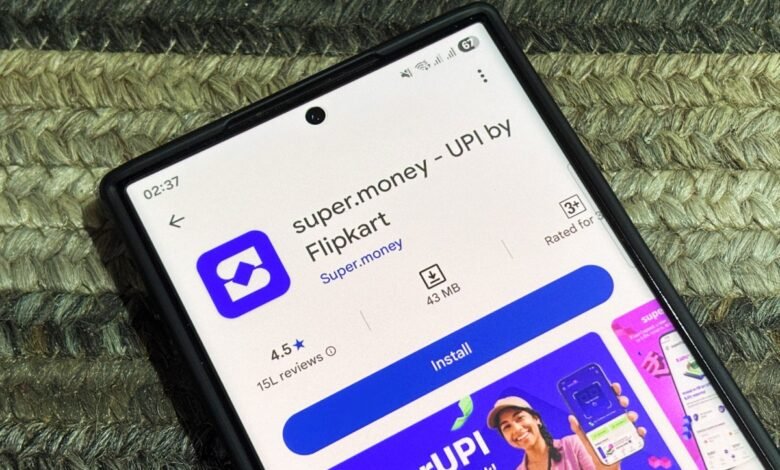Flipkart’s Super.money Expands Reach with Juspay Partnership

▼ Summary
– Super.money has partnered with Juspay to power its new D2C checkout product, Super.money Breeze, which offers one-click checkout without OTPs or repeated logins.
– This partnership helps Super.money expand beyond Flipkart’s user base and establish a standalone identity in e-commerce while aiding Juspay’s recovery after losing major clients earlier this year.
– Super.money has become a top-five UPI app in India by transaction volume, processing over 200 million monthly transactions and surpassing major banks and fintechs like Amazon Pay.
– The company is a leading issuer of secured credit cards with a 10% market share, issuing around 300,000 cards and adding 50,000 monthly as part of its monetization strategy.
– Super.money aims to raise external funding at a $1 billion valuation next year and triple its annual revenue to $100 million by 2026 through secured cards, personal lending, and its D2C checkout product.
Super.money, the financial services platform launched by Walmart’s Flipkart, is expanding its market presence through a strategic collaboration with payments infrastructure provider Juspay. This partnership supports Super.money’s push into direct-to-consumer checkout services and aligns with its goal of reaching $100 million in annual revenue by 2026. The alliance arrives as Juspay works to recover from earlier setbacks with major payment firms, which had complicated its fundraising activities.
Recently, Super.money introduced its D2C checkout solution, Super.money Breeze, designed to streamline online purchases by eliminating one-time passwords and repeated login steps. While the company did not initially name its technology partner, it has been confirmed that Juspay is supplying the underlying payments infrastructure. This development allows Super.money to engage new customer segments and increase brand recognition among D2C merchants, extending its reach beyond Flipkart’s established user network.
For Juspay, the partnership represents a significant opportunity to reconnect with Indian merchants. Earlier this year, payment gateways such as Razorpay and Cashfree shifted away from Juspay, encouraging businesses to adopt their proprietary payment tools. This change impacted Juspay’s fundraising, reducing a planned $100 million round to approximately $60 million. Despite these challenges, Juspay maintains a longstanding relationship with Amazon and secured a payment aggregator license from the Reserve Bank of India last year.
Super.money’s choice to collaborate with Juspay stands in contrast to the industry trend of companies developing in-house payment infrastructure. For a newer fintech like Super.money, however, this partnership offers a faster route into D2C integrations without the need to build full payment capabilities from the ground up. It also signals the company’s ambition to deepen its involvement in consumer transactions and boost payment volumes on its platform.
Since its launch in June 2024, more than a year after Flipkart formally separated from PhonePe, Super.money has rapidly grown to become one of India’s top five UPI applications by transaction volume. The app handled more than 200 million transactions monthly for four consecutive months through August, according to data from the National Payments Corporation of India. In a short time, it has surpassed major private banks and competing fintech platforms in UPI rankings.
Super.money has also established itself as a leading issuer of secured credit cards, capturing roughly 10% of the market. These cards, which require a security deposit from customers, are currently offered in partnership with Utkarsh Small Finance Bank. The company has issued approximately 300,000 secured cards and is adding about 50,000 new cards each month. Plans are underway to expand distribution through a private sector lender.
The secured credit card business forms a core part of Super.money’s monetization approach, helping transition users from low-margin UPI transactions to revenue-generating financial offerings. Although UPI services are free, the company leverages this high transaction volume to onboard customers and cross-sell products such as credit cards and consumer loans.
Unlike many UPI-focused fintechs, Super.money maintains a low burn rate by utilizing Flipkart’s distribution channels instead of investing heavily in marketing. It operates with a lean team of 130 to 150 employees while serving more than 80 million users.
Flipkart has invested $50 million to launch Super.money, which is led by Prakash Sikaria, former chief experience officer at Flipkart. Sikaria played a key role in initiatives such as Shopsy, Cleartrip’s acquisition, and the development of Flipkart Ads and Supercoins. While closely integrated with Flipkart, Super.money is now looking beyond its parent company and plans to raise external funding. The firm is in discussions with bankers and aims for a valuation of roughly $1 billion in a funding round scheduled for next year.
Super.money is projected to close 2025 with about $30 million in annual recurring revenue, a figure it hopes to more than triple in 2026. Growth is expected to come from its secured credit card operations, personal lending services, and the recently launched D2C checkout product. Still, the company is in the early stages of monetization and will face stiff competition from established players like PhonePe, Google Pay, and Razorpay, all of which are strengthening their own payment infrastructures.
The ability to convert its UPI scale into steady revenue, particularly through lending and checkout services, will ultimately determine whether Super.money becomes Flipkart’s next major fintech success or encounters the same competitive pressures currently affecting its partner, Juspay.
(Source: TechCrunch)




